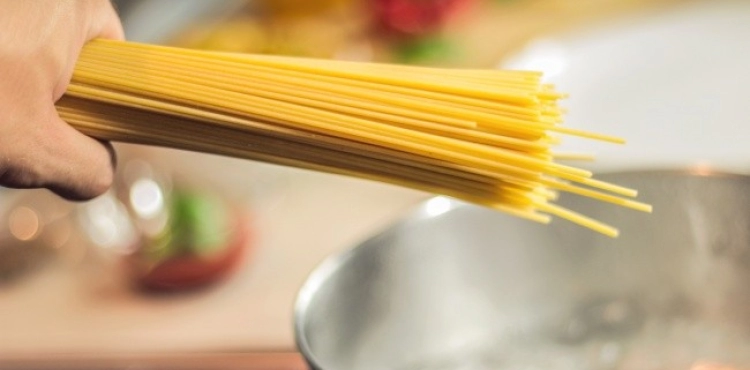London _ Agencies
Many ask why it is impossible, almost, to break dry pasta into just two pieces, this question has aroused the interest of physicists for many years, and now this ambiguity is solved as reported by the British Daily Mail.
More than two pieces are usually produced when trying to break dry pasta, a phenomenon that has puzzled some of the most prominent scientific scholars in history.
The award-winning physicist Richard Feynmann spent several hours trying to break the pasta sticks, looking for a theoretical explanation of the fact that one oud was not broken into just two pieces.
The Feynman experiment remained unresolved until 2005, when physics scientists in France assembled a theory to describe the powers at work when pasta sticks were bent.
However, researchers have finally been able to uncover the ambiguity of this phenomenon, some three years of experiments involving hundreds of pasta sticks.
The search team found that for the 10-inch pasta stick, we would need to apply the convolution at a 270-degree angle, and then bend it by bringing the parties closer together to achieve the perfect fraction.
They also found that when the lute bends evenly with both sides, it breaks near the center, where it is more bending. However, this initial fraction leads to a "rear" effect and a bending or vibration wave, which increases the number of fraction pieces.
The bending wave is going over the entire remaining edge of the pasta, before it subsides and wraps. Their Nobel Prize winning theory (IG) in 2006, a parody of the prestigious awards ceremony held annually, seems to solve the Feynman puzzle.
But the puzzling question says: Can the noodle stick be forced to split into two pieces? The answer is yes, according to a new study published in the journal Proceedings of the National Academy of Sciences, conducted by MIT.
The study authors allege that they finally discovered a way to break the noodle stick into two parts, through the bending and twisting movement applied to dry pasta.
Two MIT students, Ronald Hayser and Vishal Patil, built a mechanical fracture device to bend the noodle sticks.
and enter two clamps on both sides of the device carrying a stick of pasta. One of the parties ´ clips can be rotated to apply the convolution process to varying degrees, while the other clamp is drawn towards the convolution buckle, to bring the pasta sides together.
The two researchers used the device to bend and apply the convolution process to hundreds of pasta sticks, and the whole process was recorded with a sophisticated camera.
The study found that by twisting the pasta at approximately 360 degrees, and rounding the clips from each other to bend them slowly, the lute is divided into exactly two pieces.
The convolution wave moves faster than the bending wave, and the power is wasted so that no additional critical accumulations occur, which may cause multiple fractures.
The researchers say that the results may enhance the understanding of fracture formations and how to control the division of other substances similar to the hands.












